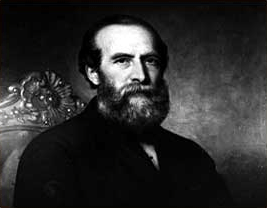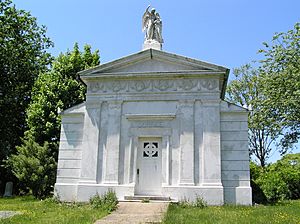Walter S. Gurnee facts for kids
Quick facts for kids
Walter Smith Gurnee
|
|
|---|---|
 |
|
| 14th Mayor of Chicago | |
| In office March 11, 1851 – March 7, 1853 |
|
| Preceded by | James Curtiss |
| Succeeded by | Charles McNeill Gray |
| City Treasurer of Chicago | |
| In office 1843–1845 |
|
| Preceded by | Francis Cornwall Sherman |
| Succeeded by | William L. Church |
| In office 1840–1840 |
|
| Preceded by | N.H. Bolles |
| Succeeded by | N.H. Bolles |
| Personal details | |
| Born | March 9, 1813 Haverstraw, New York, U.S. |
| Died | April 17, 1903 (aged 90) New York City, New York, U.S. |
| Resting place | Sleepy Hollow, New York, U.S. |
| Political party | Democratic |
| Children | Augustus C. Gurnee |
| Residence | Chicago, Illinois |
| Signature | |
Walter Smith Gurnee (born March 9, 1813 – died April 17, 1903) was an important leader in Chicago. He served as the Mayor of Chicago from 1851 to 1853. He was a member of the Democratic Party. The town of Gurnee, Illinois is even named after him!
Walter Gurnee's Early Life and Work
Walter Gurnee was born in a place called Haverstraw, New York. He moved to Chicago in 1836 after spending some time in Michigan. When he arrived in Chicago, he started a business called a tannery. A tannery is a place where animal hides are turned into leather. By 1844, his tannery was quite big, employing between 30 and 50 people.
Walter Gurnee was also one of the people who helped start the Chicago Board of Trade. This is an important place where people buy and sell things like crops. Before he became mayor, he was the main partner in a company called Gurnee & Matteson. This company made saddles and other leather goods. He was very successful in his businesses and earned a lot of money before he moved to New York City.
Becoming Mayor of Chicago
Walter Gurnee decided to run for mayor of Chicago. One of his main promises was to make sure the city owned its own water supply. This meant the city, not a private company, would control the water for everyone.
After he was elected, he worked to stop two big railroad companies, the Illinois Central and Michigan Central railroads, from joining up in the south part of the city. He was elected mayor two times. He won the election in 1851 and was re-elected in 1852.
Walter Gurnee tried to become mayor again in 1860. However, he lost that election to a person named "Long John" Wentworth. John Wentworth had also been a mayor before, but he had switched to a different political party, the Republican Party.


